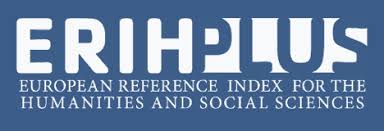№2, 2022
Covid-19 has wreaked havoc on the world when in some countries had cases in ten thousand each day thus, leading to a load on the healthcare system. Meaning that doctors and nurses had to spend more time on diagnostics. Therefore, one of the methods for reducing this load was to use a neural network for differentiating between covid and pneumonia cases. This citation showcase how neural networks can be used to detect lung x-rays having covid and pneumonia. Recall, precision, and f1-score measures are utilized to optimize the adaptive brightness of the images, selection process, resizing, and tune the neural network architecture parameters or hyperparameters. Classification quality metrics values over 91% depicted a decisive difference between radiographic images of patients having COVID-19 and pneumonia. Making it possible to make a model with strong forecasting capacity without pre-training on data from the 3rd party or engaging ready-to-use complicated neural network models. It can be the next step for the advancement of reliable and sensitive COVID-19 diagnostics (pp.84-88).
- Wu, F; Zhao, S; Yu, B; et A new coronavirus associated with human respiratory disease in China. Nature 2020, 579, 265-269.
- World Health Organization. Pneumonia of unknown cause – China.
https://www.who.int/csr/don/05-january-2020-pneumonia- of-unkown-cause-china/en/ - Veselova, E.I.; Russkikh, A.E.; Kaminskiy, G.D.; Lovacheva, O.V.; Samoylova, A.G.; Vasilyeva, I.A. Novel coronavirus infection [In Russian]. Tuberculosis and Lung Diseases 2020, 98(4): 6-14.
DOI: 10.21292/2075-1230-2020-98-4-6-14. - Pashina, T.A.; Gaidel, A.V; Zelter, P.M; Kapishnikov, A.V; Nikonorov AV. Automatic highlighting of the region of interest in computed tomography images of the Computer Optics 2020; 44(1): 74-81.
DOI: 10.18287/2412- 6179-CO-659. - Li, L; et al. Using artificial intelligence to detect COVID- 19 and community-acquired pneumonia based on pulmonary CT: Evaluation of the diagnostic Radiology 2020; 296(2): 65-71.
DOI: 10.1148/radiol.2020200905. - Bhattacharjee, A., Borgohain, S., Soni, B., Verma, G., Gao, X-Z. (2020). Machine learning, image processing, network security and data sciences. Singapore: Springer, 978-981.
- Okeke, S; et al. An efficient deep learning approach to pneumonia classification in healthcare. 2019; 2019. 1-8. DOI: 1155/2019/4180949
- Swapnarekha, H; et al. Role of intelligent computing in COVID-19 prognosis: A state-of-the-art revie. Chaos Soli- tons Fractals 2020; 1-16. DOI: 10.1016/j.chaos.2020.109947
- Wang, L; Wong, A. COVID-Net: A tailored deep convolutional neural network design for detection of COVID-19 cases from chest X-Ray 2020. https://arxiv.org/abs/2003.09871
- Ozturk, T; et Automated detection of COVID-19 cases using deep neural networks with X-ray images. Comput Biol Med 2020; 121. DOI: 10.1016/j.compbiomed.2020.103792
- Loey, M; Smarandache, F; Khalifa, Within the lack of chest COVID-19 X-Ray dataset: A novel detection model based on GAN and deep transfer learning. Symmetry 2020; 12: 651.
DOI: 10.3390/sym12040651. - Das, D; Santosh C; Pal, U. Truncated inception net: COVID-19 outbreak screening using chest X-Rays. Phys Eng Sci Med 2020; 43(3): 915-925. DOI: 10.1007/s13246- 020-00888-x.
- Apostolopoulos, D; Mpesiana T.A. COVID-19: automatic detection from X-Ray images utilizing transfer learning with convolutional neural networks. Phys Eng Sci Med 2020; 43(2): 635-640.
DOI: 10.1007/s13246-020-00865-4. - Tuncer, T; Dogan, S; Ozyurt, F. An automated residual exemplar local binary pattern and iterative relief based COVID-19 detection method using chest X-Ray Chemom Intell Lab Syst 2020; 203.
DOI: 10.1016/j.chemolab.2020.104054 - CoronaHack -Chest X-Ray-Dataset. Classify the X-Ray image which is having https://www.kaggle.com/praveengovi/coronahack-chest- xraydataset
- Gonzalez, C; Woods, R.E. Digital image processing. 3rd ed. Pearson Education Inc; 2008.
- Chollet, Deep learning with Python. New York: Manning Publications; 2017.
- Müller, C, Guido S. Introduction to machine learning with Python: A guide for data scientists. O'Reilly Media; 2016.
- Géron, A. Hands-on machine learning with Scikit-Learnand TensorFlow: Сoncepts, tools, and techniques to build intelligent systems. Sebastopol, CA: O'Reilly Media; 2017.





.jpg)









